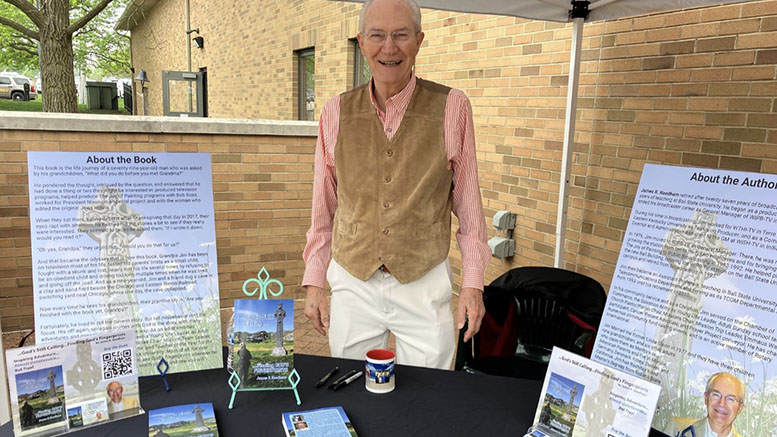OPINION: The history and value of live show entertainment at Universal Studios Hollywood
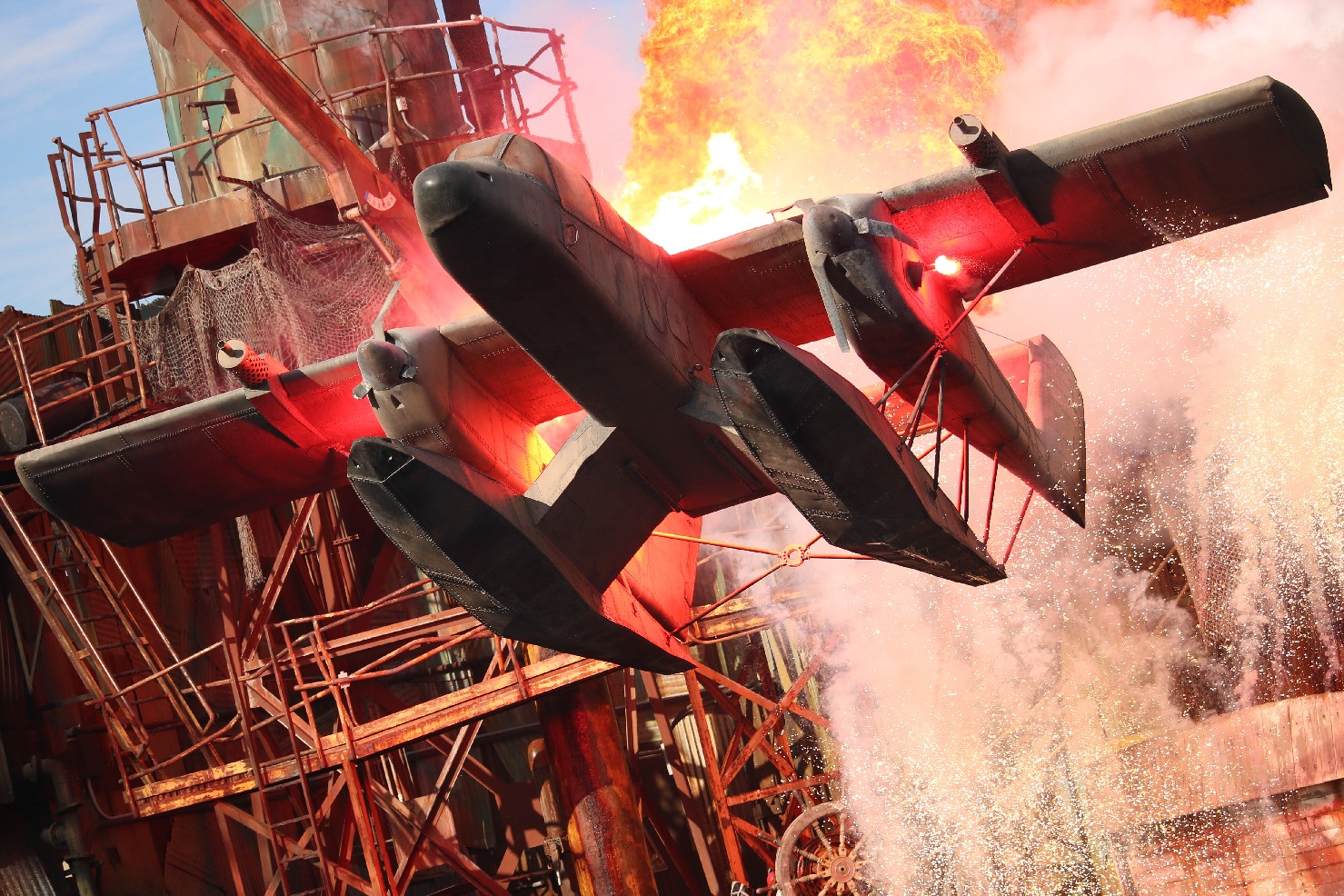
I’m often asked what I love most about theme parks. Is it the rides? The food? The shows? The characters?
My answer? Entertainment.
Whether it’s a piano performance in a small space for a handful of people, a song and dance show, or even a large-scale show like WaterWorld, I love entertainment in any form.
Universal Studios Hollywood used to offer something for guests who didn’t want to wait in line for 60 to 90 minutes for a three-minute ride experience. Part of the excitement of the entertainment was turning the corner not knowing what to expect. These organic experiences – suddenly hearing Sebastian the piano player on Baker Street playing classic songs from the ’40s on the piano, or grabbing a soda and a snack, sitting down and enjoying live music – can be relaxing and cathartic.
Those who enjoy shows on a much larger scale can opt for one of the most popular shows in theme park history, WaterWorld, and experience twenty minutes of nonstop stunt spectacle with high drops, plane crashes and fiery explosions.

Being able to rest your feet for an extended period of time can re-energize you for the day. For Universal, these shows can extend a guest’s stay in the park, increasing the potential for additional food or merchandise sales. While not every show has to be as grand as WaterWorld, some should leave you with a sense of wonder. You really want to leave the show feeling inspired, or at least detached from the real world for a few moments. Escapism can be a wonderful thing; and while Universal has invested heavily in providing world-class attractions at Universal Studios Hollywood over the past decade, it also seems that the entertainment offerings have diminished with it.
Universal Studios Hollywood has been welcoming guests to its property since 1964. For most of that time, Universal has offered some of the best and most innovative live theme park entertainment in the world. This began with the introduction of the Studio Tour, which gave guests a behind-the-scenes look at a movie and television studio. Universal welcomed regular guests and gave them unprecedented insight into the making of films and television shows. Shortly after the Studio Tour opened in 1964, Jay Stein and Lew Wasserman saw the success they were having with it and realized the importance of further expanding and continuing the concept of showcasing the studio in new ways never before possible in the entertainment industry.
To begin with, Universal presented its first two live shows: The Universal Studios Animal Actors Training Stage and The Stunt Show. The Animal Show employed industry-leading Hollywood animal trainer Ray Berwick to give audiences an inside look at how animals were trained for their performances in film and television. The Stunt Show, on the other hand, offered guests a glimpse of how some of the most famous Western fight scenes were choreographed by Hollywood’s top stunt performers. By today’s standards, both shows would seem rather simplistic and mundane to most modern guests. However, at the time, these shows offered an approach that delighted audiences with unprecedented insight into the magic of filmmaking.
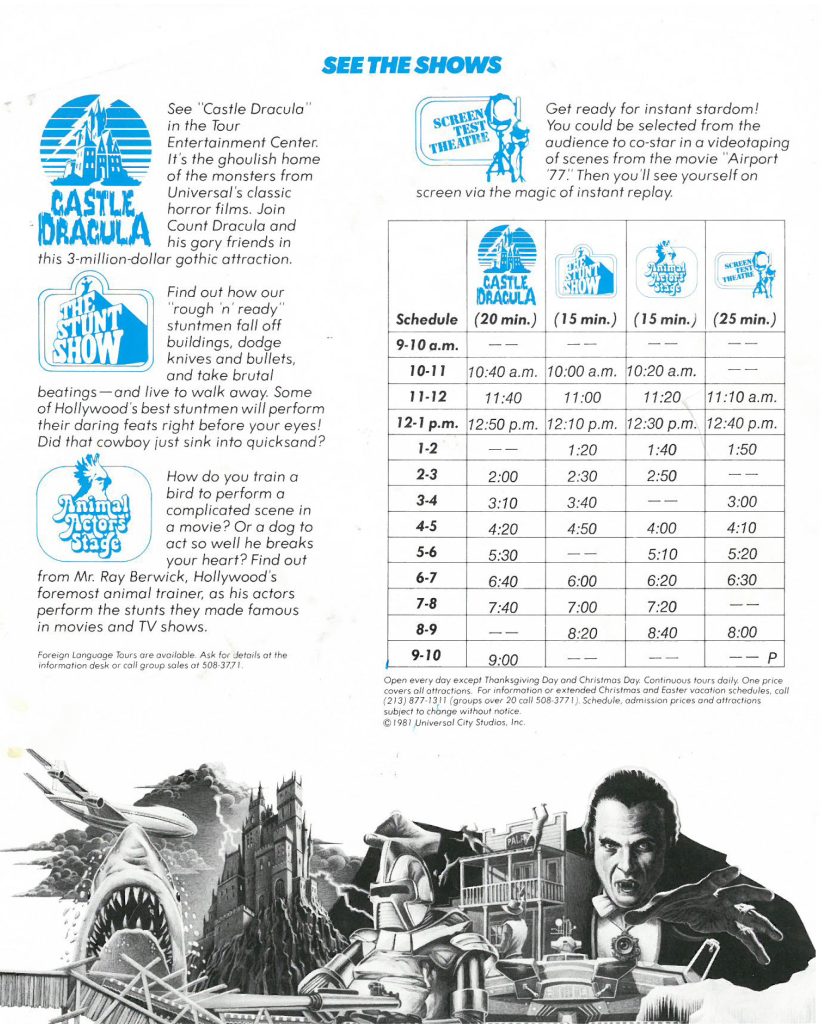
By the end of 1968, Universal had welcomed more than 3,000,000 guests to its new park. With the expansion of the Visitor Entertainment Center, more entertainment options were added, such as the introduction of meet-and-greets with characters such as Frankenstein, the Phantom of the Opera – and everyone’s favorite – Baby Frankenstein.
With the success of the Studio Tour and its two new shows, Universal pioneered a new type of show that could transport guests directly into some of the most popular films and television shows of the time. Based on television series such as Adam 12 and Emergency, as well as films such as Airport ’77, these new shows featured audience participation, allowing guests to dress up as Martin Milner, Randolph Mantooth, and Jack Lemmon to reenact memorable scenes. And to really make guests feel like they had taken part in something special, at the end of each show they could see themselves on television screens placed throughout the theater when the show ended.
Never satisfied with subpar, Jay Stein always wanted the best deal possible. Under pressure from management, Universal continued to push the envelope in entertainment throughout the 1970s, with shows like “Land of a Thousand Faces,” the Screen Test Comedy Theater, and a brand new concert venue next to the theme park, the Universal Amphitheater.
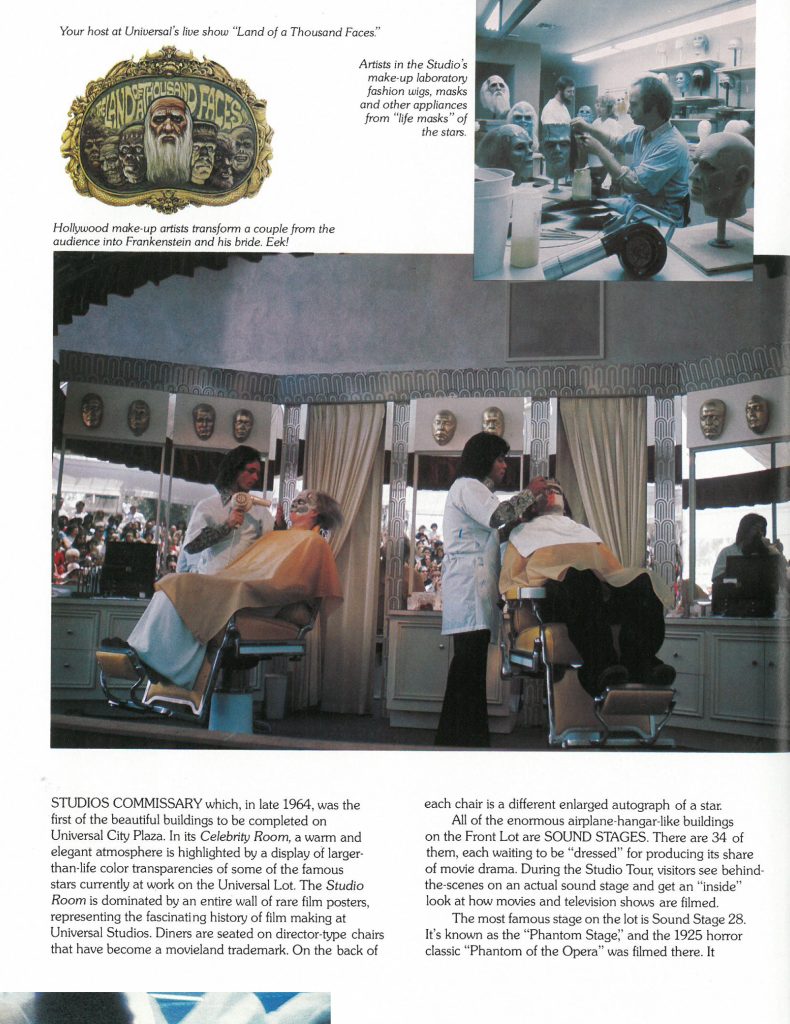
In 1983, Universal presented what was then the most technologically advanced show ever: The Adventures of Conan: A Sword and Sorcery Spectacular. From the moment guests entered the Castle Theater, which had been transformed into an enclosed venue, they were awed by a rain curtain that surrounded the entire stage. Once the show began, it became a nonstop experience with sword fights, indoor explosions, lasers, and a finale featuring an animatronic fire-breathing dragon. This show truly had it all. A technological marvel, Conan entertained audiences for ten years. During that time, Universal offered five large-scale shows.
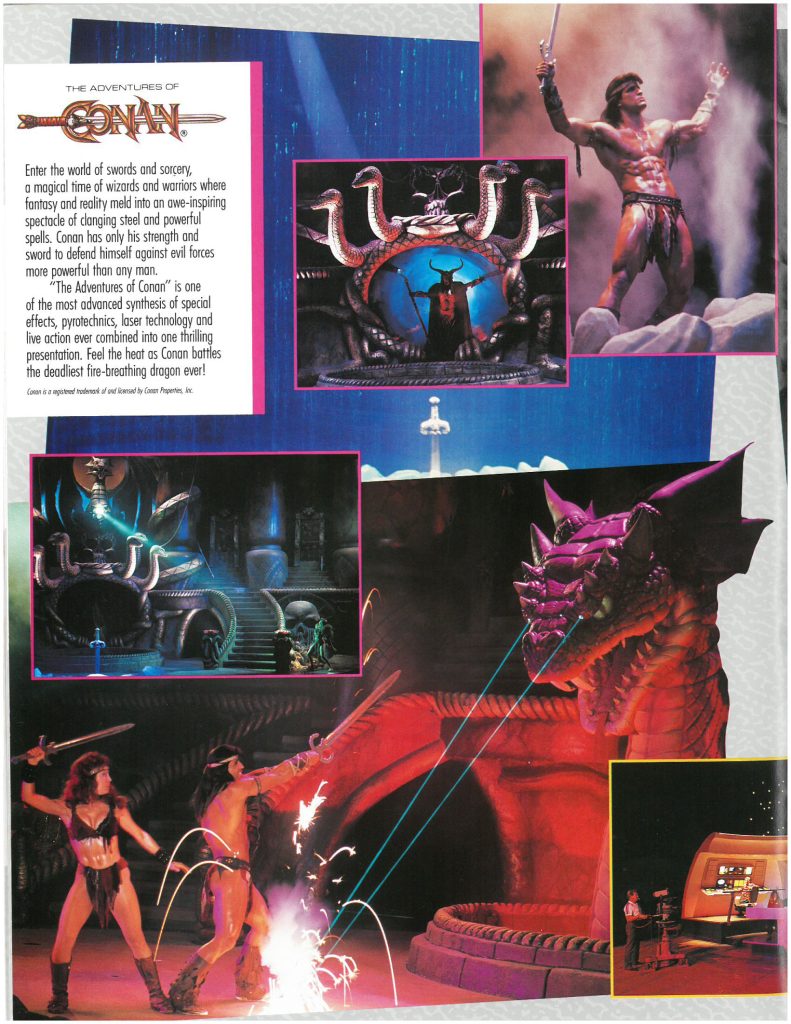
In 1987, Universal followed with the groundbreaking Miami Vice Action Spectacular. The following year, Universal presented its most advanced show: The Star Trek Adventure. The Star Trek Adventure replaced the Screen Test Comedy Theater in the newly constructed Panasonic Theater (where the DreamWorks Theater is now located). Star Trek pushed the boundaries of what was possible in front of a live audience. Audience members were selected to act out scenes aboard the Starship Enterprise and a Klingon ship. In one particularly memorable segment, four contestants were beamed directly in front of the audience. It was a showstopper that received applause at every single show.
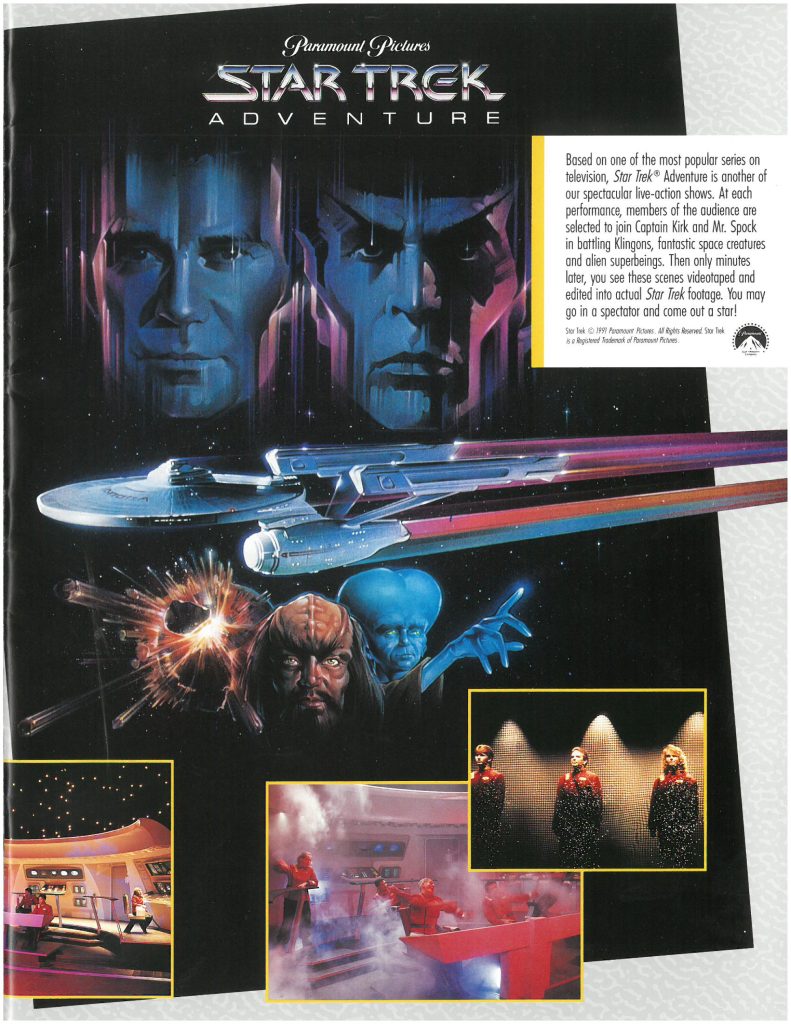
In 1991 and 1993, the first two standalone attractions, “ET Adventure” and “Back to the Future: The Ride,” were added to Universal Studios Hollywood. Even with these innovations, Universal remained true to its pursuit of new entertainment.
Set between the ET Adventure and Back to the Future: The Ride, Universal opened Backdraft in July 1992. Based on the film of the same name, Backdraft was the first attraction of its kind to place guests in the middle of the dramatic chemical warehouse fire scene from the film. Guests stood on raised platforms while fiery explosions engulfed the stage just feet in front of them. The show and concept were a crowd-pleaser, spawning a copy at Universal Studios Japan and a new generation of special effects experiences, including Twister at Universal Studios Florida and Lights, Camera, Action at Universal Studios Singapore and Universal Studios Beijing.
To celebrate their 30th anniversary in 1994, Universal used the Miami Vice show venue to create a new nighttime spectacle called Spectrablast. After Miami Vice’s final show of the day, Universal completely renovated the set to showcase incredible projections, lasers and fireworks.
In 1995, Universal presented its most impressive show with the introduction of WaterWorld, which remains one of the park’s most popular attractions to this day. The show was so popular that it was replicated in Singapore, Japan and most recently Beijing.
During the ’80s and ’90s, Universal pushed the boundaries of what was possible with shows like “An American Tale,” “Beetlejuice Rockin Graveyard Revue,” “Totally Nickelodeon” and “World of Cinemagic,” as well as smaller shows like “Blues Brothers Revue,” “The Doo Wop Singers,” “Alvin and the Chipmunks” and “Rocky and Bullwinkle.”
In 1999, Universal took another step and created a seasonal Christmas event called Grinchmas. Over the next decade, Grinchmas expanded to include a snow play area and a nightly Christmas tree lighting, during which a celebrity narrator read “How the Grinch Stole Christmas” – along with a fourteen-minute song and dance show featuring an eleven-person cast. In later versions, the event included smaller shows such as Martha May singing some songs and the Who-liday Singers.
A few years later, Universal introduced a brand new Christmas parade called 12 Days of Christmas in 2003, featuring twelve floats. While the floats were not as large as those in Anaheim, this development was still a sign that Universal was pushing the limits of the size and scope of what the park could do. In the late 2000s, Universal offered a five-minute dance show featuring Fivel, Crash Bandicoot, Woody and Winnie Woodpecker, and Curious George. For a brief moment in the summer of 2014, Universal offered a Lights, Camera, Action Street Party Celebration in Universal Plaza.
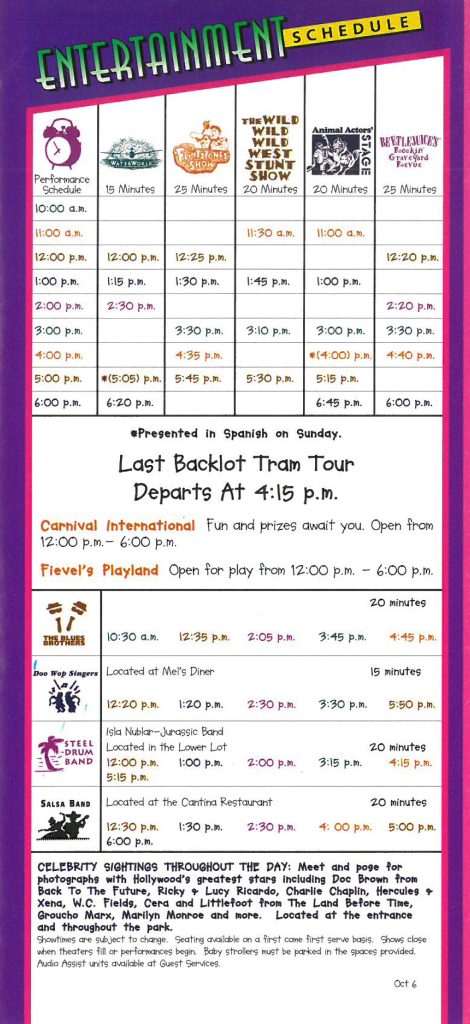
In 2019, Hollywood introduced a new nighttime spectacle at Hogwarts Castle, The Dark Arts, which featured a Patronus made of drones lighting up the night sky above Hogwarts Castle. This guaranteed audience amusement and had guests erupting with excitement at what they had just witnessed – but the show has been on hiatus since 2023 and there is no sign of it returning anytime soon.
While the list of shows above is not exhaustive, it does demonstrate that Universal Studios Hollywood took risks and made significant investments in show experiences from 1964 to 1995, and that there have been occasional investments since then.
When the park closed the Animal Actors and Special Effects Stage in early 2023, it was hoped that there would be some entertainment to replace it. The underutilized Universal Plaza remained a prime location, along with other potential areas of the park or even at CityWalk Hollywood. Giving guests a chance to take a breather and take a break is valuable, and offerings big or small give guests just that chance.
Universal once called itself the “Entertainment Center of the World” due to its bustling film and television studio as well as its theme park. The experience was unparalleled. Let’s hope that with a revived and sustained interest in entertainment, Universal can re-establish itself as the “Entertainment Center of the World” while continuing to add world-class attractions. We theme park fans win when we get the best of both worlds!



